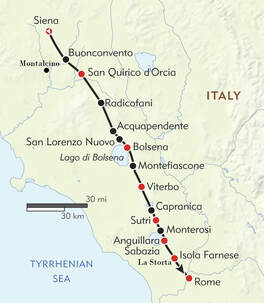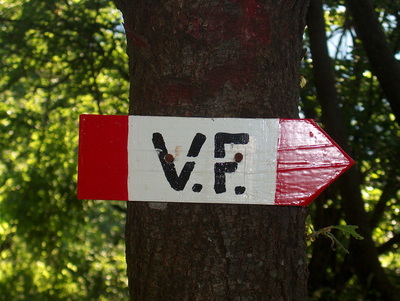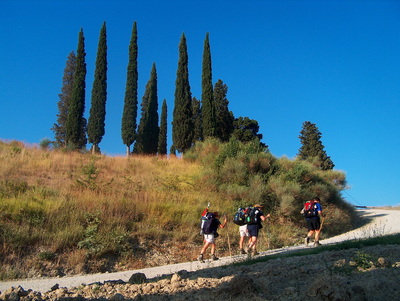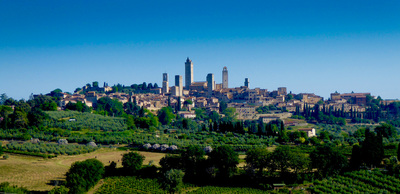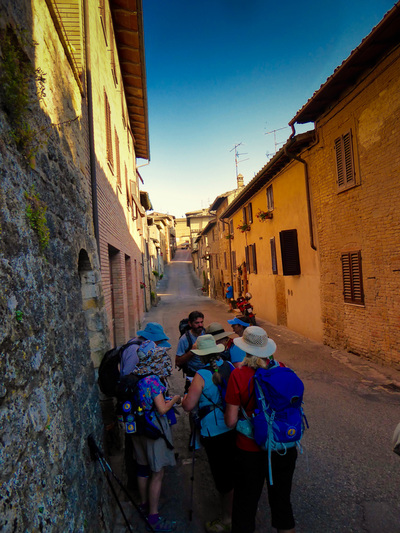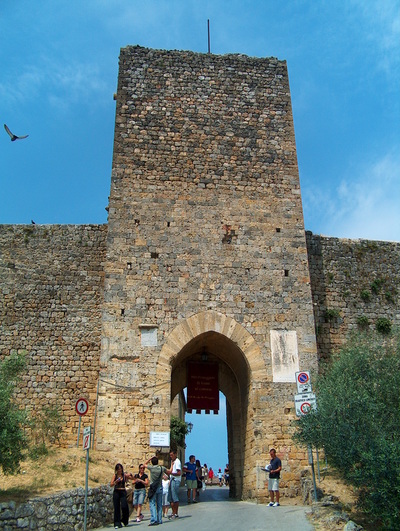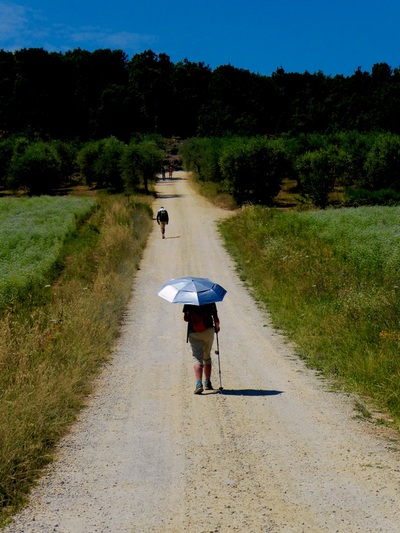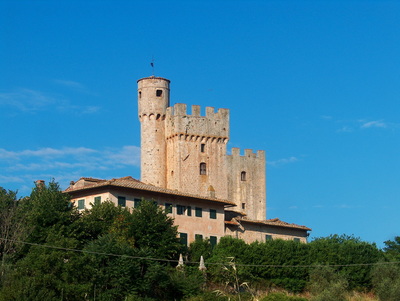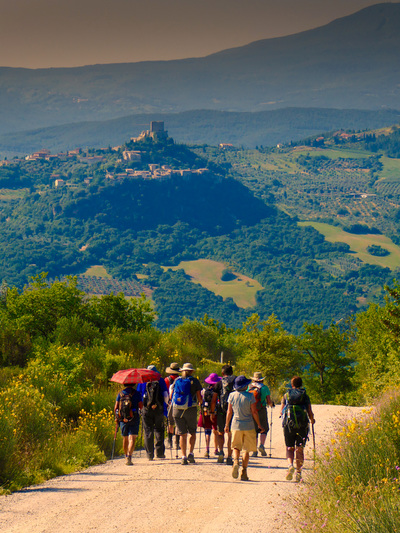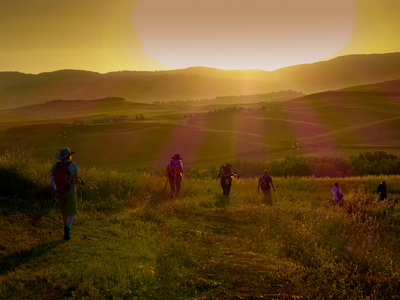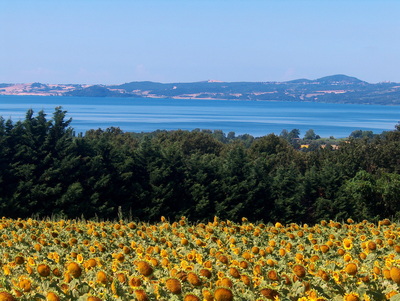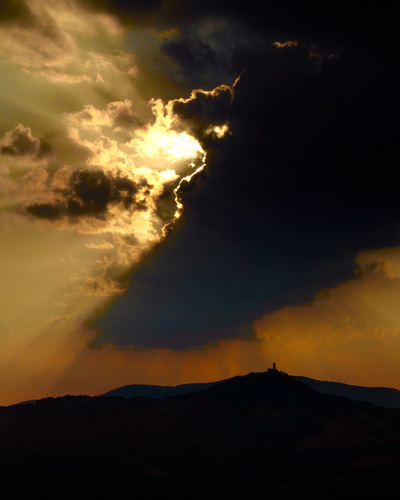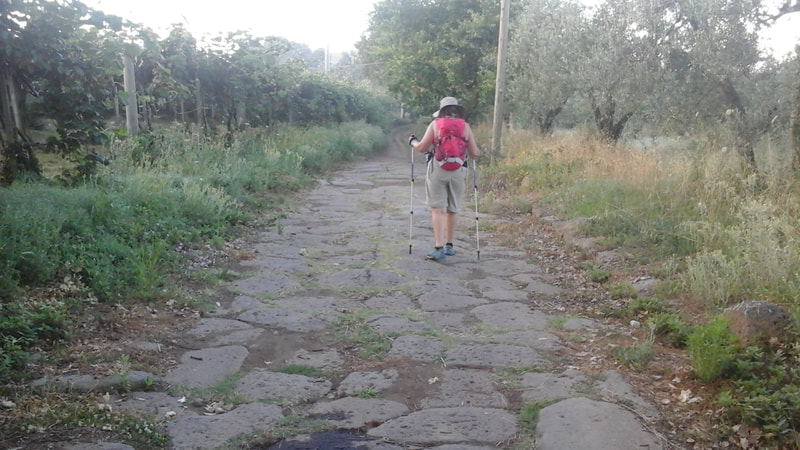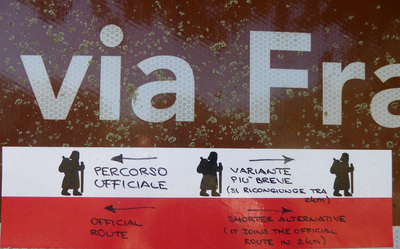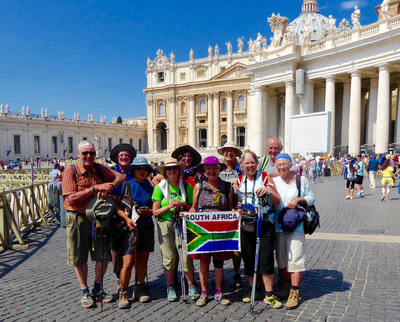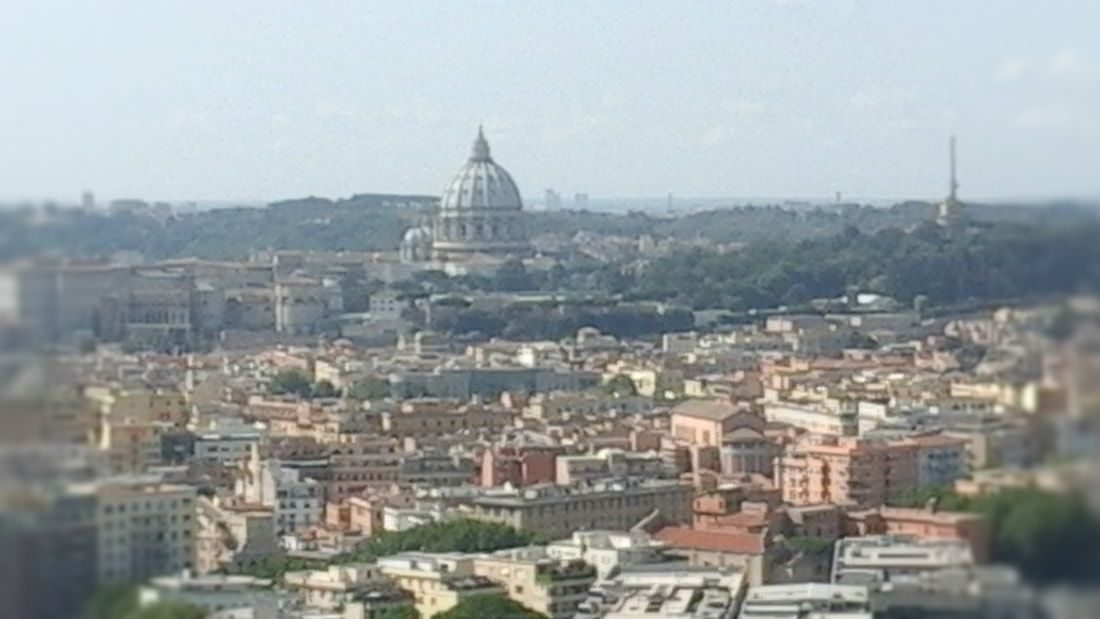La Via Francigena - the Roads to Rome
|
La Via Francigena 7 - 23 May 2025 17 days, 15 days walking from Siena to Rome (± 220 km) Cost: €1895 in shared rooms - €520 single supplement 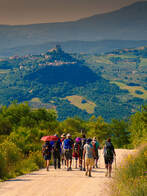
7 May: The group will meet in Siena a wonderful, not-to-be-missed historic city in the north of Tuscany.
As some of the official stages are over 30 km we have split them into two, making 15 stages altogether. One day in Siena, 15 days walking, rest day in Bolsena, and two nights in Rome. If you want more time to explore Siena or Rome, we can reserve an extra night for you. Getting there: Siena is connected by bus and or train from Rome (3 hours and €12 - €15) You can also fly to Siena MAY - JUNE 2024 7 May - Meet in Siena 8 May - Private bus to Bagni San Filippo (or a nearby Agriturismo) 9 to 23 May - walking to Rome (2 nights in Rome) Walking days
NB: Please also read the pages on What will it Cost, What is included, Accommodation, FAQ etc
In the Middle Ages multitudes of pilgrims, soldiers, merchants and travellers used a system of roads known as the “Via Francigena” – or roads of the Franks - to travel from England and other northern countries to Rome. The archbishops of Canterbury used the road to travel to Rome to receive their pallium or stole of office from the Pope. In 994 AD Archbishop Sigeric’s clerks kept a diary of his return journey entitled 'From Rome to the Channel'. In the 1990s the diary was rediscovered by Italian researchers and is now in the British Museum. The Archbishop's descriptions of places along the route proved to be very accurate and the discovery generated academic research, tourism promotion and restoration of the actual route for modern walkers. In 1994 the Council of Europe designated the Via Francigena as a 'European Cultural Itinerary.' As religious and cultural tourism grows in popularity, modern day pilgrims once again walk the old pilgrim roads to Santiago in Spain, Jerusalem and to Rome.” Quote from ‘La Via Francigena, Five Pilgrims to Rome’ Complete and return the query Form below
|
**PLEASE READ THIS INFO BEFORE JOINING** Travel writers always talk about the 'rolling hills' of Tuscany. 'Hills' is the operative word! Many villages are on top of hills and parts of the Via Francigena is a roller-coaster trail going up and down steep hills. You need to train on hills! If there are no hills for you to train on, use the stairs in your local shopping mall, public buildings, underground or at the gym, on a treadmill or StairMaster. The difficulty ratings for the stages are taken from the latest Italian Guide book published by the AEVF. There are 5 'Easy' days (short, flat trails) the rest being 'Medium' to 'Medium-Challenging'. In our experience, the Medium to Challenging stages in guide-books refer mostly to the longer distance days so we have reduced the distance of these stages to lower the difficulty to medium. There is no technical hiking involved, you will need to be reasonably fit and able to walk an averahe 15 km per day which includes three days of 18km km. Sunrise is around 05h30 which means you should arrive at your destination between 2pm and 3pm each day. (Sunset is around 21:45) The trail is on often on mountain tracks, stones, gravel, riverine trails and asphalt paths which, although not technically difficult, require a moderate level of fitness. With this in mind, we have had many people between the ages of 60 and 80 walking to Rome in our groups. Its not an age thing! Its up to you to do the training. Do not compare this walk with the Camino de Santiago! If you have walked the Camino de Santiago you shouldn't have any trouble walking the Via Francigena. However, the Via Francigena today is probably like the Camino was 20 years ago. There are often no villages between villages, not many places to get water or stop for a coffee or food, fewer pilgrims, and churches are rarely open. Buses are few and far between, and many places don't have taxis so there is no escape if you want to stop walking. Pilgrim passport and guide book www.sloways.shop/en/product/guida-piu-credenziale-en/ English Guidebooks Lightfoot Guides – Paul Chinn and Babette Gallard http://pilgrimagepublications.com/pp_2014/via-francigena/ Via Francigena Pilgrim Trail - Sandy Brown www.amazon.com/Via-Francigena-Canterbury-Rome-Cicerone/dp/1852846070 Italian (and English edition) La Via Francigena 1000km a Piedi dal Gran San Bernardo a Roma : 2016 http://libri.terre.it/libri/collana/21/libro/543/La-Via-Francigena.-1000-km-a-piedi-dal-Gran-San-Bernardo-a-Roma. Useful Websites: www.pilgrimstorome.org.uk/ http://www.viefrancigene.org/en Download APP https://www.facebook.com/groups/19899007360/ Join the Via Francigena Group on Facebook (started by Sylvia Nilsen in 2007) https://www.facebook.com/groups/19899007360 
LUGGAGE TRANSFERS AND SUPPORT VEHICLE LUGGAGE SIZE AND WEIGHT not weighing more than 20kg. If the baggage is significantly larger in size or weight, you will be asked to pay more for the transfer. DO NOT hang extra items, that can't fit in the case, to the outside of the luggage. These can come adrift and could be lost. Rather pay for an extra bag. You will be given the number for the Transfer company at the orientation meeting in Siena to use in case of an emergency. | ||||||
